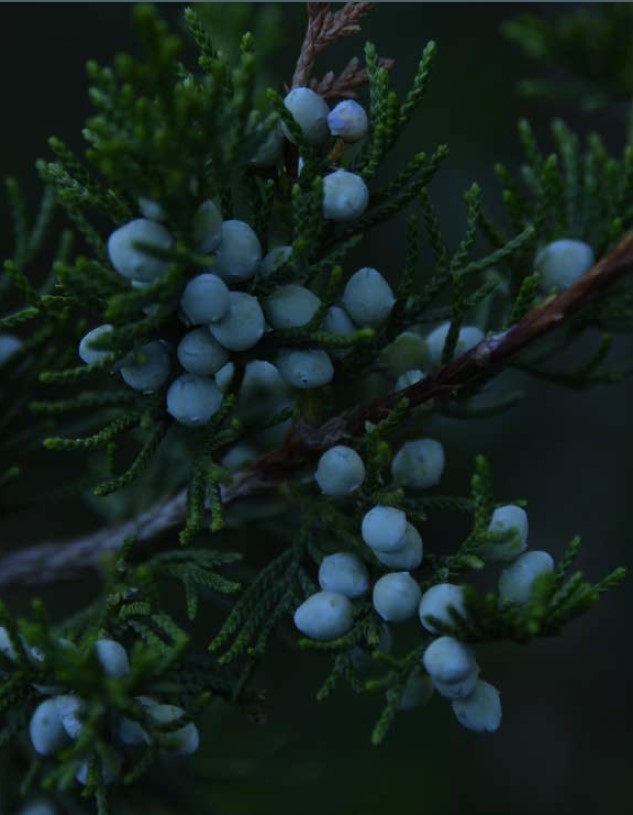Growth habit: Evergreen shrub or small tree, height: 1 to 10 m, depending on location and age
Lifespan: Several hundred years possible
Needles: Spiky, arranged in whorls of three, length: 0.5-1 cm
Flower: Dioecious (male and female flowers on different plants), Male flowers: Yellow, small, scale-like, Female flowers: Inconspicuous, greenish
Flowering time: April-May
Fruit: Pseudo-berries (cones with fleshy scales), initially green, later black-blue with a ripe wax coating, Maturation: Takes 2-3 years
Habitat: Sunny to semi-shady places, prefers sandy, calcareous, permeable
Occurrence: Europe, Asia, North America; especially in heaths, sparse forests and mountainous regions
Medicinal use: has a diuretic, anti-inflammatory and digestive effect. Helps with rheumatism, gout, bladder and kidney diseases.
Ingredients: Essential oil (e.g. terpenes), resins, tannins, flavonoids, organic acids
Applications: Internally - tea, liqueur, juniper berries as a spice, externally - ointments, rubs for muscle and joint complaints
Special features
Glechoma hederacea stimulates the metabolism and, thanks to its essential oils, is helpful for chronic bladder and kidney diseases and, when brewed as a tea, has a soothing effect on liver problems, abscesses, tumors and eye problems.
Side effects: None known.
Interesting facts: In folk medicine and superstition, the common juniper is said to protect against witches and demons. It is also a symbol of purity and protection.
Ecological significance: Important food source for birds (e.g. juniper thrush) and a refuge for many animals. The berries are used as a spice (e.g. in gin, sauerkraut).


